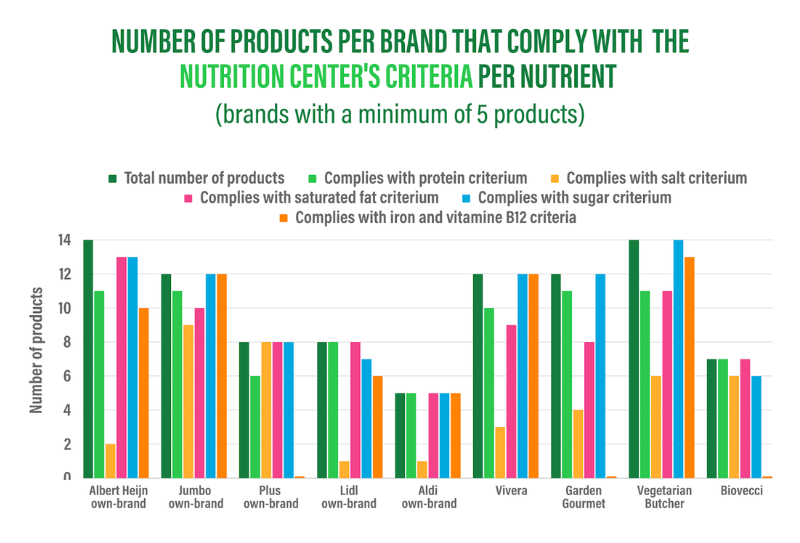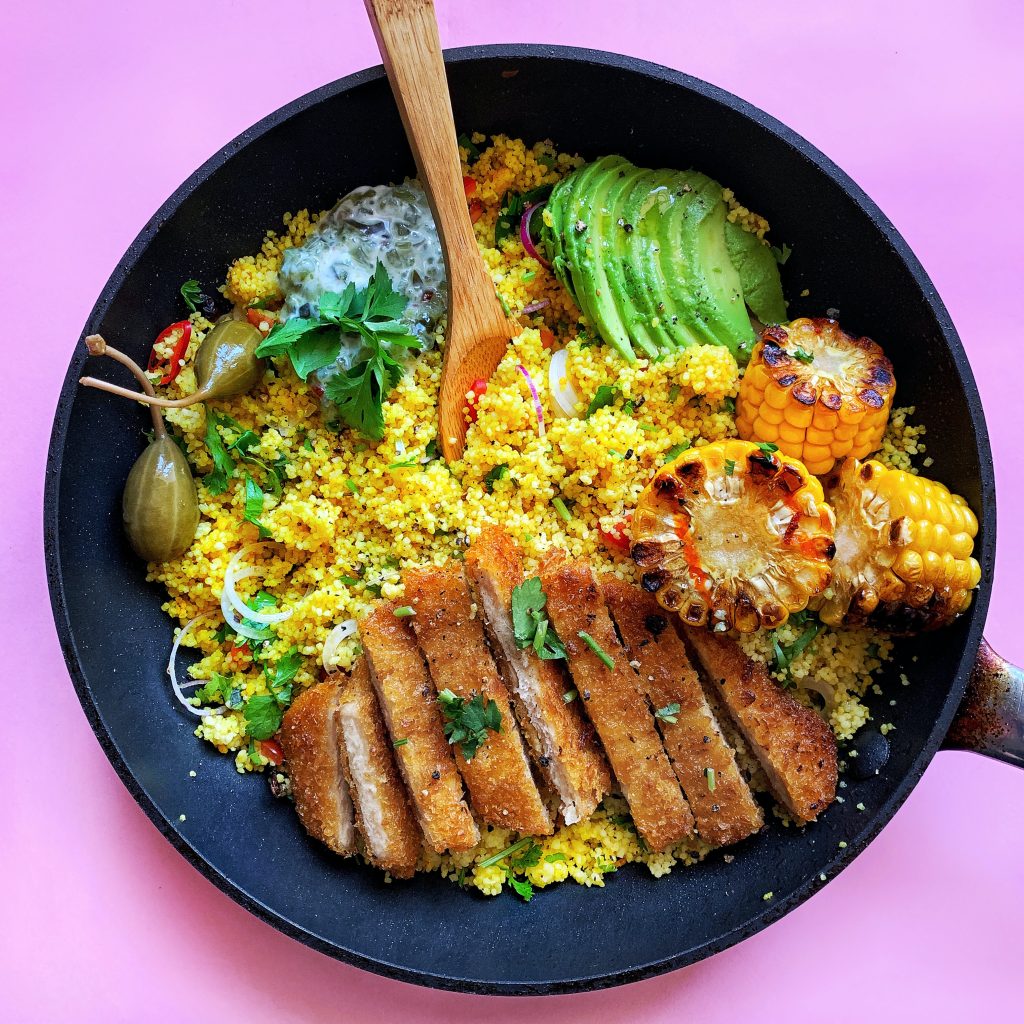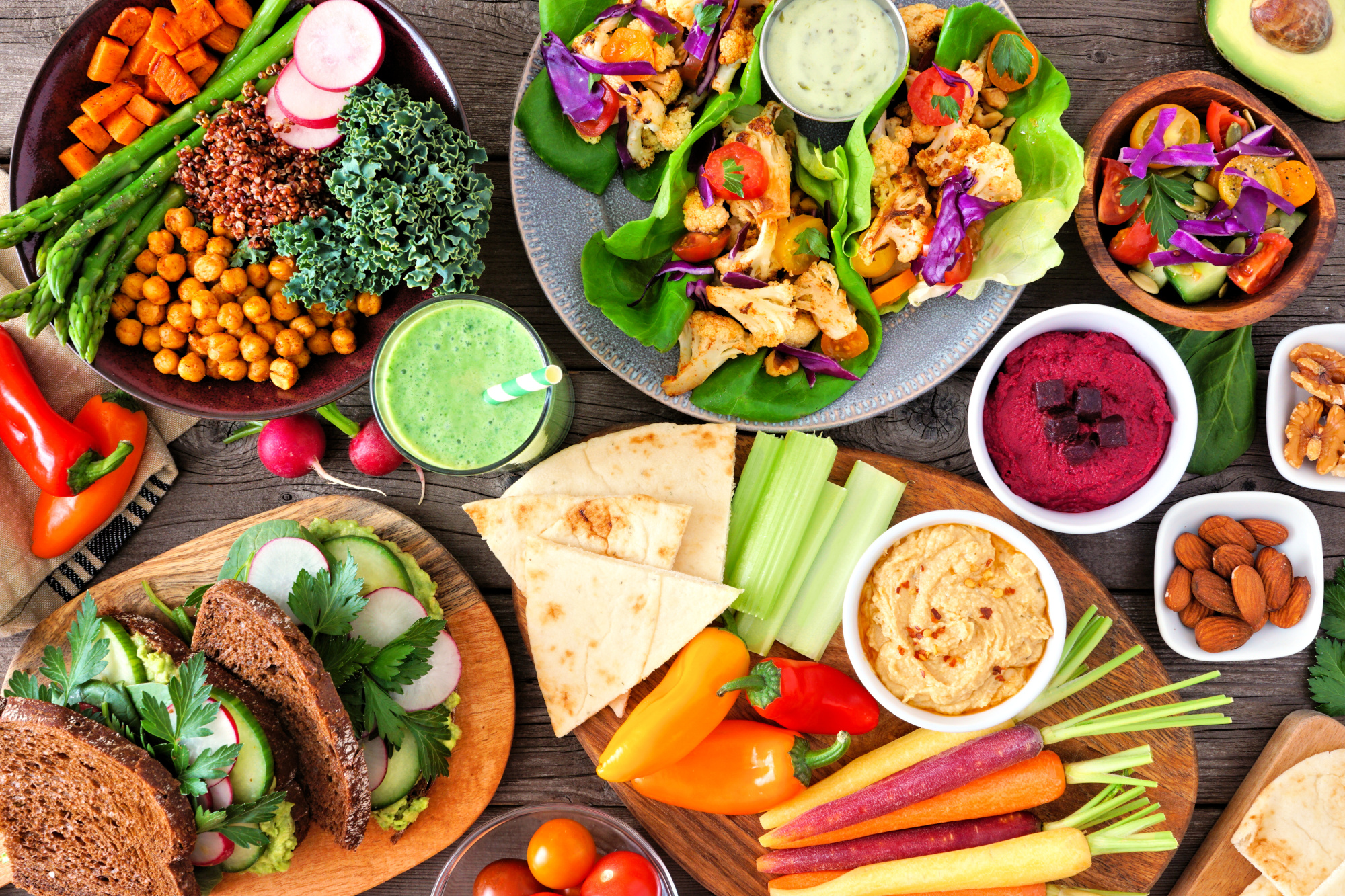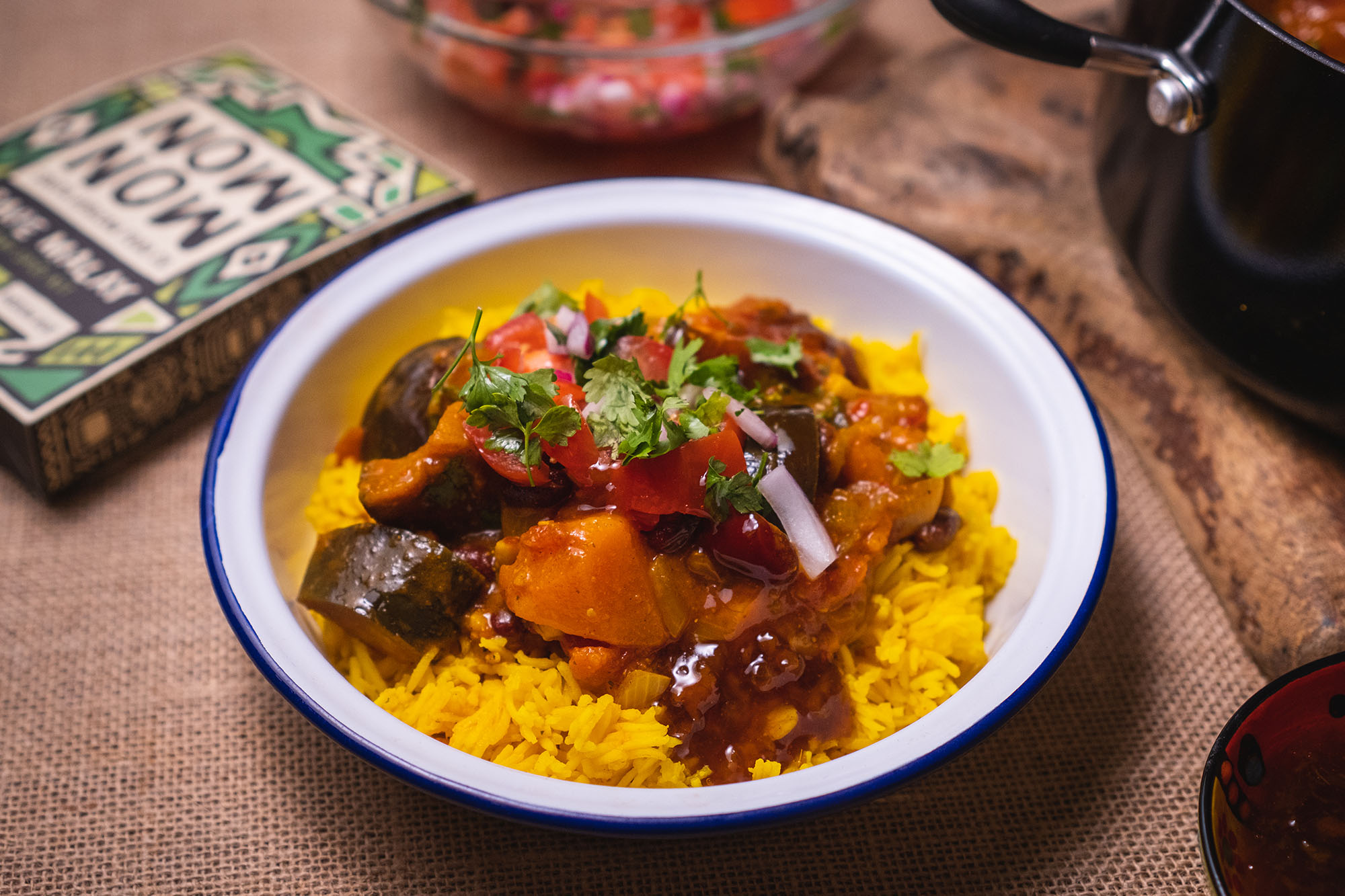Must-know insights from ProVeg Netherlands’ report on plant-based meat
For consumers, some of the greatest questions posed by plant-based meat products are, ‘Do they meet nutritional guidelines?’, ‘Can they compete with traditional meat products?’, and, ‘Are they healthy?’.
Well, a new study1 shows that plant-based meat alternatives are often a healthier choice than the animal-based meat products they replace.
This news could prove ground-breaking when encouraging health-motivated consumers to choose plant-based meats over animal-based ones.
The study, led by ProVeg Netherlands, compared the nutritional value of 130 meat substitutes available in Dutch supermarkets with 41 animal-based reference products. For the meat substitutes, the researchers used the nutritional information as shown on the packaging. For the animal-based reference products, ProVeg took the nutritional values from the Dutch Nutrient Database (NEVO).2
Let’s look at the key findings from the report, uncovering what it means for businesses like yours and how to use the information in your product strategy (and beyond) through actionable insights.3

Key findings
1. Plant-based meat substitutes are often healthier than animal-based meat products
On average, the plant-based products, subject to the study, contained less saturated fat, fewer calories and significantly more dietary fibre. In addition, they had a similar percentage of calories from protein. This indicates that, in terms of the risk of lifestyle diseases, meat substitutes often have a slightly better composition than animal meat, especially red and processed meat. When enriched, the plant-based products also had higher iron and vitamin B12 content.
Here’s a more in-depth breakdown:
- Better scoring nutritionally: Plant-based burgers, minced meat, meatballs, sausages, and bacon received a better average score than animal meat when tested against the criteria of the Dutch Nutrition Centre. These plant-based products contained less salt and significantly less saturated fat than the animal-based reference products. If the plant-based products were enriched with additional nutrients, they contained more iron and vitamin B12 on average than the animal-based variants. They also contained more fibre. Shawarma and nuggets showed similar scores for both plant-based and animal products. Animal meat only scored better in the categories of chicken chunks, chicken fillet, and schnitzel.

It’s worth mentioning that…
Among all examined categories, animal chicken meat scored best on the criteria related to lifestyle disease risks. Although plant-based chicken pieces and fillets largely met the criteria of the Nutrition Centre, they, on average, contained slightly more salt and less protein than animal-based chicken. Thus, producers should develop a lower salt and higher protein plant-based chicken that can more adequately compete with animal-based chicken. At the same time, producers must not compromise on flavour when improving the nutritional profile of plant-based chicken, since taste is a key motivator for consumers.
- High protein: Of the plant-based meat substitutes examined, 85% met the protein criterion for meat substitutes, while 88% of the animal reference products met this standard. Although plant-based meats have a lower average absolute amount of protein than the animal reference products (16g versus 20g), the average percentage of energy from protein is almost the same (an average of 37% for plant-based products and 38% for animal reference products). Therefore, most of the examined plant-based meats can be considered to contain sufficient protein. Interestingly, 50% of the examined plant-based meats have a higher percentage of energy from protein than their corresponding animal-based reference products.

- Balanced profile: Based on the type of protein ingredients used in plant-based meat alternatives, 80.8% of the examined products have a balanced amino acid profile and therefore a good protein quality.
- Meet vitamin criteria: On average, all categories of plant-based meats contained sufficient iron and vitamin B12, even when non-fortified products are included in the calculation. Some enriched plant-based meats also contained zinc.
It’s worth noting that…
The percentage of fortified products in the Netherlands is much higher than in most countries because the Dutch Nutrition Centre calls for fortification in its guidelines. Many other countries around the world do not have this. But, think of the improvements to nutrition if more of them did! Better alignment on nutrient enrichment across Europe would be ideal.
- Lower calories: Plant-based meats contained fewer calories on average (183 kcal) than animal reference products (251 kcal). The primary reason for this difference is the lower fat content of plant-based products.
- Less saturated fat: Plant-based meats contained significantly less saturated fat on average than animal reference products. Eighty-four percent of plant-based products met the meat substitute criteria, compared to 20% of animal reference products. When the more lenient criterion applicable to animal meat is applied, 94% of meat substitutes and 39% of animal reference products meet the criteria.

- No problems with sugar: Based on the data, the amount of sugar is rarely an obstacle for plant-based meats to meet the criteria of the Dutch Nutrition Centre. Of the 130 examined meat substitutes, 127 met the maximum 3.5g of sugar criterion. Data is not available to show how much of this sugar is naturally present in the basic ingredients and how much is added by manufacturers. Besides flavour, small amounts of sugar are used as a carrier for added vitamins, for example.
- High fibre: There are no criteria for fibre content for plant-based meats. However, almost all examined meat substitutes (98%) contained more fibre than their corresponding animal reference products. Of the examined plant-based meats, 46% are a source of fibre (3g fibre/100g), and 31% are fibre-rich (6g fibre/100g). Since Dutch people consume too little dietary fibre, it can be considered a positive development that most meat substitutes are a source of fibre or fibre-rich.
2. Nutritionally, there is high brand and product variability between plant-based products
An important finding of the study is that there are significant variations in the nutritional composition of plant-based meats among different products and brands, just as there are between different types of meat products. Some brands perform well in meeting the criteria of the Nutrition Centre, while others lag.
For example, Jumbo supermarket performs well, nutritionally, with half of their own-brand plant-based products meeting all criteria of the Nutrition Centre. In contrast, Albert Heijn’s plant-based products have excessive salt content, and lack iron and vitamin B12, while Beyond exceeds the saturated fat content. This means it’s necessary to check individual products to find out which meat substitutes are the healthiest.

Different brands distinguish themselves with predominantly high or low salt content. This indicates that certain companies are more actively working to reduce salt than others.
In categories where the animal meat is very salty and contains a lot of saturated fat, such as smoked sausage, burgers and bacon, the meat substitutes are also usually not healthy according to the national criteria, although they often have a better composition than the animal meat products.
3. Processing does not determine a product’s healthiness
Due to increasing attention to the ‘health risks’ of ultra-processed food, questions are being raised about whether meat substitutes made from processed plant proteins are a healthy alternative to animal meat. Often, due to being processed, plant-based products are grouped under the same nutritional umbrella as junk foods.

However, Van Haperen explains that this should not be the case: “According to the current definition, plant-based meats are considered ultra-processed, but it doesn’t make sense to lump them together with products such as sweets or crisps. Just like with animal meat, there are healthy and less healthy products. The degree of processing is not in itself sufficient indication as to whether or not meat substitutes are healthy.”
Certainly, the study found that the nutritional quality and ‘healthiness’ of the plant-based meat products tested varies widely, just as it does with animal meat.
Additionally, the report shows that plant-based meat substitutes have a much better nutritional value than what is typically associated with ultra-processed products. Inasmuch, the degree of processing alone does not determine whether a product is ‘healthy’ or not.
4. Producers must enrich products whenever possible
The Dutch Nutrition Centre states that plant-based meats can only meet the criteria of the Dutch dietary guidelines if they are enriched with iron and vitamin B12 or B1, to align their nutritional value more closely with that of meat.
However, the study found that the absence of added iron and vitamin B12 is an issue for many brands in the Netherlands. While 55% of meat substitutes are enriched, 45% are not (though this percentage is already a lot higher than in many other countries).

The Nutrition Centre only accepts specific unenriched plant-based products as healthy alternatives to meat. These include legumes, nuts, tofu, tempeh, and textured soya protein chunks or granulate (TVP), which naturally contain iron and vitamin B1, but lack vitamin B12. Other meat substitutes are only considered part of the Dutch dietary guidelines if nutrients are added.
Why aren’t all meat substitutes enriched?
- Not all countries appreciate the enrichment of meat substitutes, like Germany, France, and Sweden, where there is a perception that added nutrients are poorly absorbed, making enrichment undesirable. This is challenging for manufacturers who aim to market their products in both the Netherlands and these other countries.
- Some manufacturers believe that adding nutrients does not align with a ‘clean label’, short ingredient list.
- For organic products, adding nutrients is not allowed.
As with salt and fat levels, there are significant differences in enrichment between brands.
Percentage of plant-based products enriched for brands with five or more products in the ranking:
- Jumbo own-brand – 100% (12 of 12 products)
- Vegetarian Butcher – 93% (12 of 13 products)
- Vivera – 100% (12 of 12 products)
- Aldi own-brand – 100% (5 of 5 products)
- Lidl own-brand – 75% (6 of 8 products)
- Albert Heijn own-brand – 71% (10 of 14 products)
Garden Gourmet, Biovecci, and Plus own-brand do not have any products that meet all the criteria because they do not enrich their products with added nutrients.
Because enriched meat substitutes contain relatively high levels of vitamin B12 and iron, in relation to the threshold values, all meat substitutes assessed together on average meet the criteria, even when non-enriched meat substitutes are included in the calculation.
“So, if a consumer alternates between fortified and non-fortified meat substitutes, their average intake of iron and vitamin B12 meets the criteria for meat substitutes. Nevertheless, it would be better if even more meat substitutes were fortified with iron and vitamin B12, so the useful nutritional value corresponds more closely with that of meat.”
5. Salt content of plant-based products must be reduced
The greatest obstacle for plant-based meats to meet the criteria of the Dutch nutrition guidelines is salt content. Among the examined plant-based meat substitutes, 42% met the Nutrition Centre’s salt standard, compared to 46% of the animal-based reference products. Of the meat substitutes, 58% are saltier than their corresponding animal-based reference products.
This is especially noticeable in ground and fresh minced meat, chicken breast, and chicken pieces. The plant-based variants of meatballs and schnitzel are also, on average, saltier than the animal-based ones. For most processed meat types, the animal-based variants are, on average, saltier, especially in the categories of fresh and pre-cooked burgers, smoked sausage, other sausages, and bacon. In summary, meat substitutes are, on average, saltier than unsalted meat but less salty than salted meat.

As with animal meat, too high a salt content is the main reason many meat substitutes do not meet all the national criteria.
Only a few plant-based brands have all their ranked products meeting the salt criterion of the Nutrition Centre, including Plus supermarket own-brand.
What are the guidelines for salt?
For animal meat, the Nutrition Centre sets the criterion that only products without added salt fit into a healthy diet according to the Dutch dietary guidelines.
For plant-based substitutes, this criterion has been made more lenient because there are almost no variants without added salt available on the market, and the choices would be very limited. Healthy meat substitutes are allowed to contain a maximum of 1.1g of salt per 100g.
Overall, food producers should aim to lower the salt content of plant-based meat substitutes to better match that of unsalted animal-based products. However, this must be realistic – plant-based meat products are often sold pre-flavoured, and in those cases, it’s not practical to expect them to have a salt content that competes with unprocessed meat, to which consumers will usually add salt during cooking. Thus, producers should aim for a suitable nutrition and flavour balance.
Actionable insights
The results from the study are encouraging, but they also show us that producers of meat substitutes have great work ahead of them. Product improvements are required to ensure that nutritional requirements, like those in the Netherlands, and consumer demands are met.
“As the consumption of meat substitutes increases, it’s important they have a good nutritional value and are preferably healthier than animal meat.”
Following the report, the New Food Hub makes the following recommendations for product producers (in the Netherlands, and beyond):
1. Improve nutritional profiles: Producers should prioritise improving the nutritional profiles of their plant-based meat alternatives. This includes reducing salt content, further lowering saturated fat levels, and increasing protein and fibre content.
2. Enrich with essential nutrients: To ensure nutritional equivalency of meat alternatives with animal meat, and satisfy consumer demands for healthier alternatives, producers should enrich plant-based meat products with essential nutrients (like iron and vitamin B12).
3. Improve labelling and transparency: Enhance product labelling to provide clear and accurate information about the nutritional content and value of plant-based meat substitutes. Explore options to boost your marketing potential with appropriate claims about protein, fibre and vitamin content. When highlighting nutritional benefits, also emphasise product tastiness (so that consumers don’t associate healthier products with sacrificing flavour).
4. Innovate: Continue investing in research and innovation to develop healthier and tastier plant-based meat alternatives. This includes exploring ways to reduce salt (a focus for plant-based chicken producers) and saturated fat while improving flavour and texture.
5. Segment the market: Recognise that different consumer segments may have varying preferences and dietary requirements. Develop a range of plant-based meat products to cater to diverse tastes and nutritional needs.
6. Collaborate: Collaborate with health organisations, government bodies, and consumer advocacy groups to establish industry standards and guidelines for plant-based meat products. Seek alignment on nutrient enrichment and other health-related aspects.
7. Aid consumer education: Invest in consumer education initiatives to raise awareness about the nutritional benefits of plant-based meat alternatives and provide guidance for making healthier choices within this category.
8. Engage with regulatory authorities: Advocate for consistent and clear regulations across regions regarding the categorisation and labelling of plant-based meat products, ensuring that they align with health-focused criteria.
9. Address research gaps: There is limited research on the actual health effects of meat substitutes compared to traditional meat. Advocate for, and conduct more research to fill these gaps to further improve products.

By focusing on these recommendations, producers can meet consumer demands for plant-based meat alternatives and contribute to the growth of this market segment while promoting better dietary choices.
Access the full report in Dutch, here. Got questions? Get in touch with Dr Martine van Haperen at [email protected]. For more support on your alternative protein strategy, email [email protected].
References
- How healthy are meat substitutes? Analysis of the nutritional value of meat substitutes compared to animal meat products.
- Note: ProVeg consulted the Netherlands Nutrition Centre and the Dutch Consumers’ Association in developing the methodology. The Netherlands Nutrition Centre also provided feedback on the draft report.
- Note: Remember that these results are reflective of guidelines from and products sold in the Netherlands. Yet, they stand as a great example of the European plant-based meat product market, since many of the brands in the study are produced and sold across Europe.



